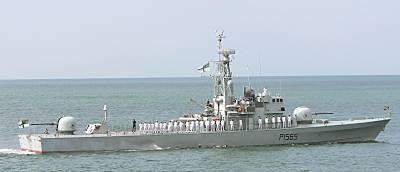WASHINGTON, April 25, 2011 — To optimize U.S. cybersecurity using a new information-sharing enterprise network in a reduced-budget era, a top Defense Department official gave industry leaders a challenge: “We need your innovation.”
Robert J. Carey, deputy assistant secretary of defense for information management integration and technology and the Pentagon’s chief information officer, outlined the department’s “enterprise strategy and roadmap” for members of the Armed Forces Communications and Electronic Association here April 22.
Carey said the plan would bring all branches of the military together on the same information-sharing network system.
“It’s not about consolidation as much as it is about raising security, while keeping enterprise in view,” he said. “Improving cybersecurity is what this is about.”
Making sure firewalls get trusted information and driving costs down while raising the security bar form the nexus of the effort, Carey said.
“When a service member is downrange, he doesn’t care where the information comes from –- only that it’s at hand and he can do something with it,” Carey said. “Enterprise is actionable, timely, relevant, trusted information.”
And while it seems simple to provide, he said, the existence of many networks makes it difficult.
Defense budget cuts have become the catalyst for change, Carey told the industry leaders, and finding efficiencies to run the department has become essential.
“If we keep doing what we’ve done [with past funding], we’re not going to get there,” he said.
The enterprise network, however, would cost little, because the system’s architecture would result from a “bottom-up” approach, Carey said, with DOD making new uses out of existing network equipment from all military branches.
“It’s really hard to defend [the department’s] 15,000-ish networks and 10,000 applications and systems,” he acknowledged. But even with a substantial amount of details yet to be ironed out –- including network optimization, data center consolidation, data tagging and others — Carey said some efficiency initiatives already are paying off after six to eight months of work, such as in tracking identity on classified networks.
“It’s actually starting to happen,” he said.
Email is another challenge. “There are a lot of email systems out there,” he told the group. “We’ve got to buy what we have better, and use what we have better.”
Carey said all branches of the military bought email systems and set them up command by command, ship by ship, with no tightly knit communications system. But now, he added, enterprise system purchases for hardware and software will be viewed with a critical eye.
“We need to look at: ‘Is it applicable at the enterprise level? If it is, how can I buy it better than I’m buying it now? How can I use my money more wisely for the taxpayer?’ ” Carey said.
The challenges of the new enterprise system will be many, Carey said, but he added that he believes it is a proven system that is both cost-effective and essential for improved cybersecurity.
“We are starting this pump with the water we already have,” he said, noting the drop in funding for the enterprise network system. “And the defense leadership recognizes that factor.”
Launching the system will take more time with less funding, Carey said, “but we’re still going forward, because this can be done on its own gravity.”
Source:
U.S. Department of Defense
Office of the Assistant Secretary of Defense (Public Affairs)

 von
von 

